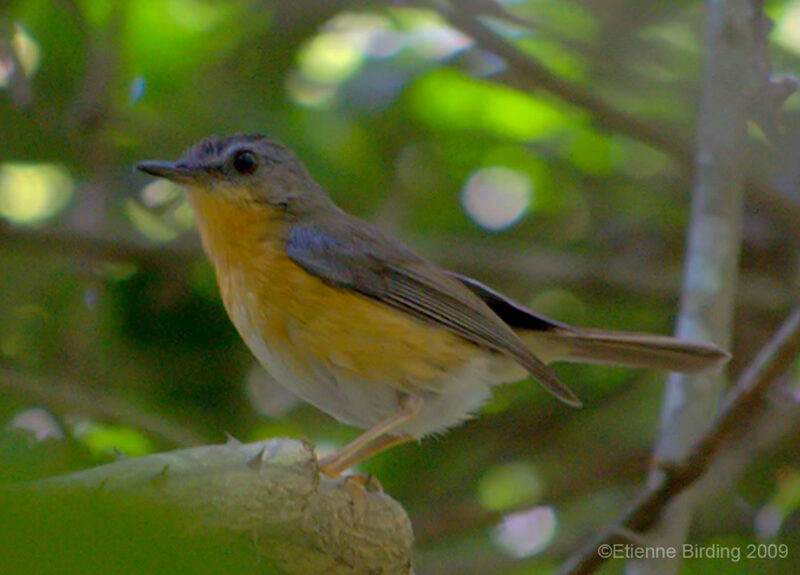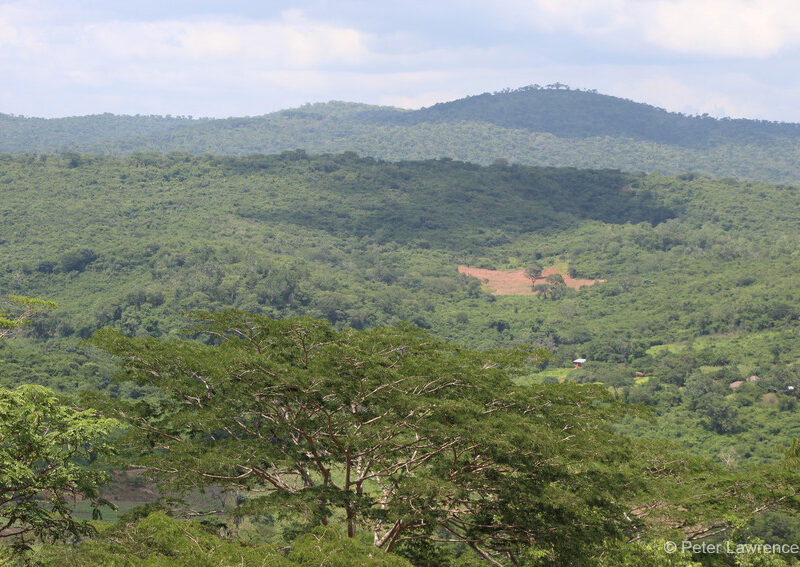East Coast Akalat
Species Data
Class: Aves
Order: Passeriformes
Family: Muscicapidae
Scientific Name: Sheppardia gunningi
IUCN Red List status:Near Threatened
Description
The East Coast Akalat is a small Robin-like Old World flycatcher, measuring 11–12 cm, and weighing 16–19 g. There are four subspecies recognised, although some may prove to be a full species.
Both sexes are similar, with bronze-brown upperparts, brown wings, greyish outer webs on the primaries and primary coverts, and a greyish-brown upper tail, contrasting with the yellowish to orange-rufous throat, neck sides, breast, and flanks, white belly, and buff vent. The supercilium and lores are bluish-grey and there is a white spot above the lores that is visible when singing. The bill is blackish with a yellowish base, and the legs are greyish-pink to pinkish-brown.
The subspecies sokokensis from south-eastern Kenya and eastern Tanzania is shorter-winged than nominate gunningi with a bluer supercilium and lores, and richer orange underparts with an orange-buff rather than white belly.
Juveniles have buff-dappled olive-brown upperparts, and buff underparts with reddish-brown flecks.
Behaviour
The East Coast Akalat is rarely found in the canopy, preferring to forage by turning leaves on the ground, or in the understorey, sallying from perches for flying invertebrates and frequently dropping from a low perch to the ground to catch prey. They frequently feed at the edge of clearings and by following ant swarms, but will also join mixed-species foraging flocks, and are known to sometimes feed in association with Red-capped Robin-chat (Cossypha natalensis), and Eastern Bearded Scrub-robin (Cercotrichas quadrivirgata), as well as Four-toed Elephant-Shrew (Petrodromus tetradactylus).
As well as invertebrates such as ants, termites, beetles, bugs, mantises, millipedes, moths, caterpillars, cockroaches, orthopterans, and spiders, their diet also includes seeds, berries, and even very small frogs.
Breeding occurs from November to January. The nest, built by both sexes, consists of a deep, slightly domed cup made of rootlets, situated either on the ground in leaf litter or amongst the roots of stumps. A clutch consists of 2–3 white eggs with russet-brown spots and blotches, and the chicks are fed by both parents, sometimes with help from another adult.
The song is a fast two second warble, occasionally extended up to a minute, and calls include a repeated piping “siiip” interspersed with guttural clicks, accompanied by wing flicking and tail spreading.


Habitat
East Coast Akalat are found in south-east Kenya, northern Malawi, Mozambique, and eastern Tanzania.
This species inhabits dry lowland and mid-elevation moist evergreen forest, mostly below 300 m (the race alticola of eastern Tanzania is found between 1140–1750 m), containing damp valleys with lush vegetation, clearings, and a partly open understorey. In Tanzania they also occur in secondary forest where tall trees have been logged.
Threats and Conservation
The East Coast Akalat is fairly common to common within their very restricted range. The global population is estimated at 15,000-29,999 individuals but appears to be declining in parts of its range due to habitat destruction, and populations in Malawi, Mozambique, and Tanzania are thought to be relatively small. In addition, the habitat on which they depend is now highly fragmented. Therefore, this species is listed as Near Threatened on the IUCN Red List.
In the coastal forests of Tanzania, extraction of timber and deadwood for charcoal, and forest clearance for agriculture are serious and increasing threats. To prevent further declines their remaining forest habitat must be preserved. In Tanzania and starting in 2021, WLT is supporting a project by partner TFCG, to save coastal forests that are a confirmed home for the East Coast Akalat.
